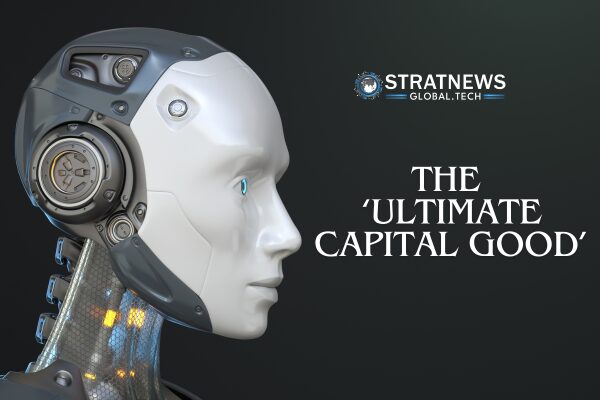Robots Tipped to Be the Ultimate Capital Good, Says AI Expert
Robots represent the “ultimate capital good,” machines designed to multiply human productivity much like washing machines, ATMs, or automated factory tools, according to Ryan Julian, a research scientist in embodied AI who previously worked on large-scale robotics foundation models at DeepMind.
Speaking on the ChinaTalk podcast with host Jordan Schneider, Julian explained that robots differ fundamentally from ordinary appliances because they combine intelligence with the ability to act in the physical world. “Waymo vehicles and Roombas are robots, but dishwashers are appliances,” he said, emphasizing that the defining feature is the capacity to sense, reason, and interact with real-world environments.
Robots Beyond the Factory
Julian noted that the potential impact of robotics goes far beyond factories. Advanced robots could eventually extend into services such as home healthcare, cleaning, or repairs — sectors that traditionally struggle with productivity gains. Declining birth rates in developed economies, he said, underscore the need for technologies that can offset shrinking workforces. From a geopolitical standpoint, he described robotics as a dual-use technology, equally relevant to manufacturing efficiency and military applications.
Overcoming Physical Challenges in Robotics
At the same time, Julian was clear about the immense difficulty of robotics. “Physics is unforgiving,” he said, pointing out that while software errors can usually be reversed, mistakes in the physical world have permanent consequences. Even a robot vacuum tangling with a cable demonstrates how quickly a small failure can become catastrophic. Unlike AI systems that process existing digital inputs, roboticists must build hardware that can perceive and act in the physical world, translating digital intent into physical action.
Historically, robotics focused on hardware challenges such as motors, sensors, and locomotion. Breakthroughs like MIT’s Cheetah project in the 2000s helped establish quadruped forms and advanced motor technology. Investment in self-driving cars accelerated progress in 3D sensing, while improvements in consumer electronics drove down the costs of cameras and computation. Today, Julian observed, robots benefit from cheaper, more powerful batteries, actuators, and processors, making real-time onboard decision-making increasingly viable.
Foundation Models Driving New Capabilities
The bigger shift, he said, is in how robots are programmed. Until recently, building a robot required teams of engineers writing highly specialized code for narrow applications like sorting packages. That model doesn’t scale. Instead, researchers are now applying the foundation model approach from AI — training large, data-driven systems that can learn new tasks from limited demonstrations. “We want the foundation model for robotics because it may unlock the ability to deploy robots in many places where they’re currently impossible to use,” Julian explained.
A major obstacle is data. While large language models are trained on billions of text-image pairs from the internet, there is no equivalent “internet of robot data.” Current robotics foundation models train on tens of thousands of examples, requiring intensive manual collection. To overcome this, Julian described three strategies: starting with models pretrained on digital data, training robots in simulation, and leveraging existing video of humans performing tasks. Companies are also investing in large fleets of robots to generate training data at scale, hoping to reach a critical threshold where performance rapidly improves.
The gap between intelligence and physical capability remains a defining challenge. Julian compared general-purpose robots to self-driving cars: while cars are robots, their task is relatively simple — moving from point A to point B without touching anything. By contrast, useful robots must perform many different tasks and interact with objects, making the problem far harder.
Comparing US and Chinese Approaches
Julian also highlighted differences between the U.S. and Chinese robotics sectors. Chinese research quality, he said, has improved rapidly in recent years, with many papers now worth close study. Industry approaches also diverge. Chinese firms focus on scaling hardware production and lowering costs, while American companies emphasize breakthroughs in intelligence and services. Unitree, a Hangzhou-based company, exemplifies the Chinese strategy, transforming academic prototypes into affordable, mass-produced quadrupeds.
What Comes Next in Robotics Deployment
Looking ahead, Julian said the first large-scale deployments of general-purpose robots will likely appear in logistics, material handling, and light manufacturing — tasks such as moving, sorting, or kitting parts. These sectors, which make up a significant portion of global labor, are relatively easy to automate and already see pilot projects. More complex assembly work could follow in seven to ten years, while home robots remain a more distant goal given higher safety and capability requirements.
Julian cautioned against framing robotics purely as a threat to jobs. “Most new technologies are labor-multiplying and labor-assisting,” he said. The notion of full labor replacement, he argued, is both unrealistic and premature. Instead, the next wave of robotics is more likely to make workers safer and more productive rather than eliminate entire categories of employment.
As the field pushes forward, Julian sees robotics standing at a similar juncture to artificial intelligence a decade ago. With maturing hardware, falling costs, and growing interest in foundation models, researchers and companies are racing to unlock the next phase. If successful, the robots of the near future may no longer be confined to factory floors, but become versatile tools shaping industries and economies worldwide.


